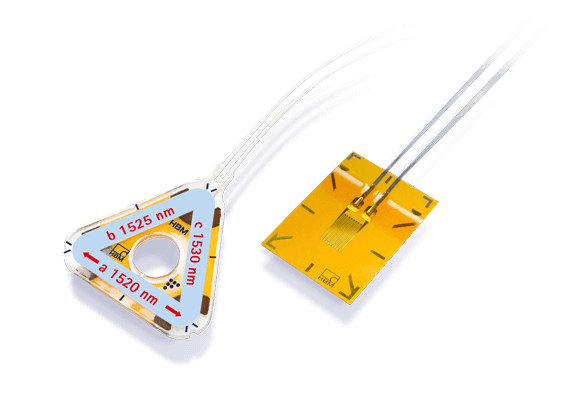The Two Strain Gauge Technologies from HBM
Robust material calculations must be carried out to accurately evaluate the mechanical strengths or the fatigue life of components used in machines, buildings, and vehicles. This requires an understanding of the material load under static and operating conditions.
Mechanical strain measurements require various strain gauge technologies to derive the level of stress that a material is subjected to throughout normal and overload operating conditions. The underlying principle of strain gauge measurement is Hooke’s law, which posits a proportional relationship between strain and resultant stress.
All strain gauges are to be closely installed on the measured component surface or integrated within it to ensure the accurate acquisition of mechanical strain values regardless of the measurement methodology. This blog post will explore two disparate strain gauge technologies available from HBM:
Electrical Strain Gauge Technology
The most firmly established strain gauge technology is based on electrical strain gauges, which are used to acquire strain values by measuring the relative change in electrical resistivity.
These can be used for experimental stress analysis (ESA) or for transducer manufacturing. In the latter case, strain is measured by a foil strain gauge integrated into a load cell or force transducer which succumbs to mechanical deformation. Both positive and negative strain can be acquired as changes in the strain gauge’s electrical resistance.
Over 2000 different varieties are available for distinct measurement requirements, including linear strain gauge technology for measuring strain across a single axial plane and rosette strain gauge technology to analyse biaxial stress states in unknown directions.
Optical Strain Gauge Technology
Optical strain gauge technology uses an optical fiber and the properties of light traveling in it to acquire strain through non-electronic means. These components use silica optical fibers in high-strength polymer coatings with imprinted Fiber Bragg Gratings (FBG) to monitor variations in reflected spectra of light propagated through the fiber.
An FBG is a localized interference pattern inscribed on the core of an optical fiber, which alters the propagating behavior of light traveling through the component. This pattern allows light to pass through the incisions while certain bandgaps are reflected. Changes in the period of an FBG due to mechanical stress causes variations in reflected light signals.
An interrogator attached to the optical fiber sweeps laser light of varying wavelengths through the optical fiber and analyses light that is reflected from the optical sensor. Fluctuations in the optical signals can be used to deduce the mechanical strain of the component at rest and during extended periods of operation.
Strain Gauge Technologies from HBM
HBM is a world-leader in the design, manufacture, and supply of unique strain gauge technologies for all measurement applications. With conventional and cutting-edge measurement methods, we provide unique solutions for everyday and severe strain measurements.
If you would like any more information about the strain gauge technologies available from HBM, please do not hesitate to contact us.
